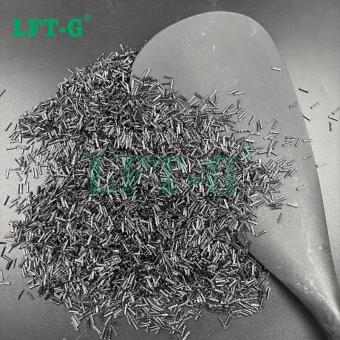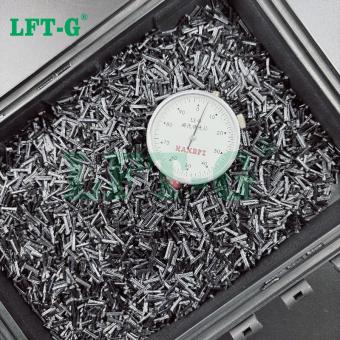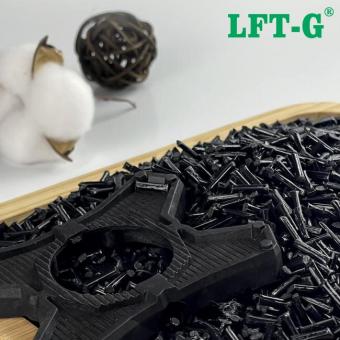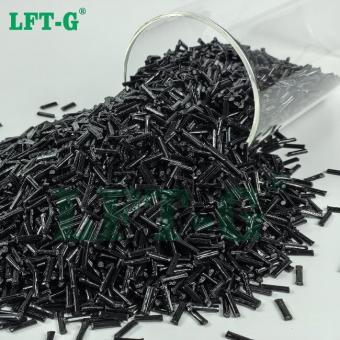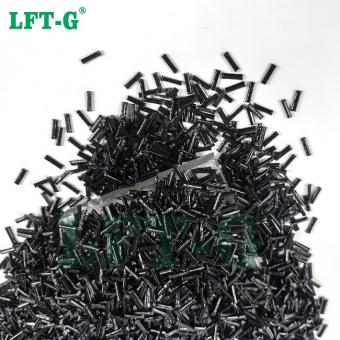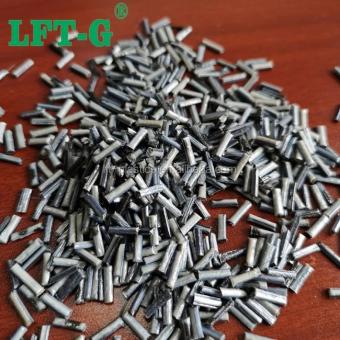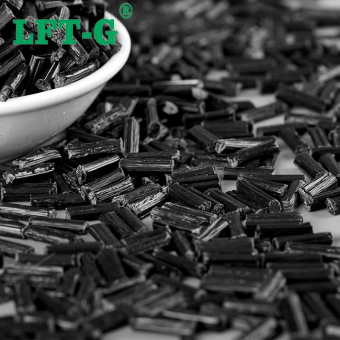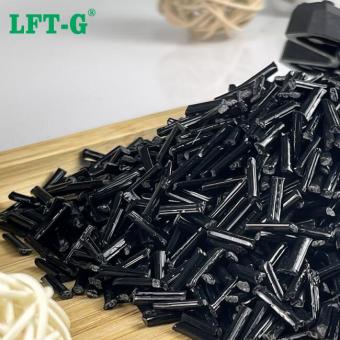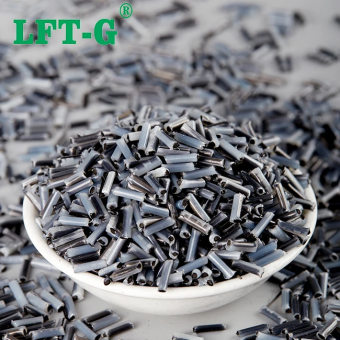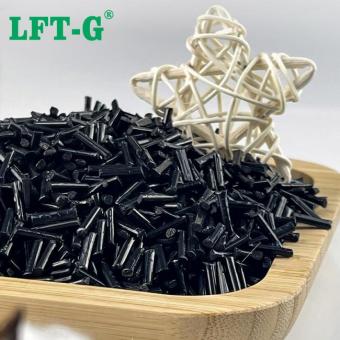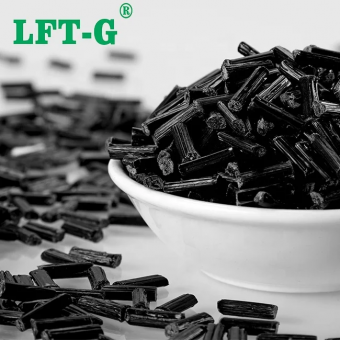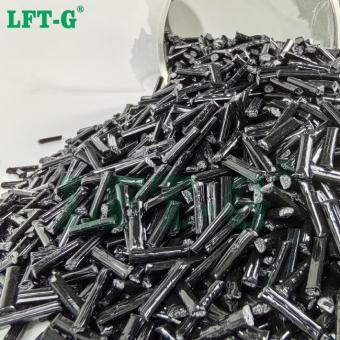Long carbon fiber is a new material with high strength and high modulus and excellent mechanical properties. It is a microcrystalline graphite material obtained by carbonization and graphitization of organic fibers. Its specific gravity is less than 1/4 of steel, and its strength is higher than that of steel. Corrosion resistant, high modulus, no melting. And a variety of resin substrates after impregnation extrusion molding into pellets, long carbon fiber polymer. Can be used for direct molding products. In recent years, it has been widely used in aerospace, mechanical and electronic chemicals.
-
LFT Nylon Polyamide 6,6 Long Carbon Fiber filled CompositesPA66 long carbon fiber composite offers high strength, excellent dimensional stability, and superior thermal resistance, making it ideal for demanding structural applications. It is widely used in automotive, electronics, and industrial components where lightweight performance is critical.
- nylon 6 nylon 66 difference
- carbon fiber nylon
- carbon fiber nylon filament
- nylon fiber uses
- fiber reinforced nylon
- nylon fiber properties
Tags :
-
LFT Nylon Polyamide 6 Long Carbon Fiber filled CompositesWidely used in automotive, electronics, and industrial equipment applications, this material can replace certain metal components to achieve both weight reduction and performance enhancement while offering excellent heat and chemical resistance to meet various demanding conditions.view more
-
LFT Copolymer Polypropylene Long Carbon Fiber filled CompositesThe modified polypropylene material reinforced by carbon fiber has a series of advantages, such as light weight, high modulus, high specific strength, low coefficient of thermal expansion, high temperature resistance, heat shock resistance, corrosion resistance, good vibration absorption, etc., and can be applied to auto parts such as automobile sub-instrument assembly.
- pp copolymer
- pp random copolymer
- polypropylene block copolymer
- PP cabon fiber
- carbon fiber crutches
- carbon fiber handlebars
Tags :
-
LFT Homopolymer Polypropylene Long Carbon Fiber filled CompositesThe modified PP reinforced by carbon fiber has a series of advantages, such as light weight, high modulus, high specific strength, low coefficient of thermal expansion, high temperature resistance, heat shock resistance, corrosion resistance, good vibration absorption, etc., and can be applied to auto parts such as automobile sub-instrument assembly.
- pp homopolymer
- homopolymer polypropylene
- pp fiber
- carbon fiber application
- carbon fiber bicycles
- carbon fiber frameset
Tags :
-
China Carbon Fiber PLA Modified CompoundsLong Fiber Reinforced PLA (LFR-PLA) is an engineering plastic that combines long glass fibers with polylactic acid (PLA) resin. PLA itself is an environmentally friendly thermoplastic, known for its biodegradability. However, it has limited mechanical properties, such as strength, toughness, and heat resistance.
- carbon reinforced PLA
- PLA green materials
- pla recycled materials
- PLA composites
- carbon fiber reinforced plastic
- china carbon fiber
Tags :
-
China Carbon Fiber Polyetheretherketone Modified CompoundsPure PEEK itself is a special engineering plastic, with radiation resistance, self-lubrication, high temperature resistance, wear resistance, fatigue resistance and other characteristics. The performance of carbon fiber reinforced PEEK material has improved in many aspects compared with pure PEEK material.view more
-
China Carbon Fiber Polyphenylene Sulfide Modified CompoundsPPS is a high-performance, tough engineering plastic with great dimensional and thermal stability, as well as a wide operating temperature range of up to 260 °C and good chemical resistance. Moreover, PPS, like most other thermoplastics, is an electrical insulator. Its ability to be used at high temperatures coupled with its thermal stability makes PPS great for applications such as semiconductor components in machinery, bearings, and valve seats.
- plastic granules price per kg
- long fibre reinforced thermoplastics
- PPS Plastic
- pps melting point
- Injection molding pps
- Engineering plastic
Tags :
-
China Carbon Fiber Nylon 1,2 Modified CompoundsThis material combines the excellent toughness, low moisture absorption, and chemical resistance of PA12 with the superior strength, stiffness, and fatigue resistance provided by long carbon fibers. It is designed for advanced lightweight structural applications.
- PA12 Resin
- Nylon CFRTP
- Nylon polymer
- PA12 VS PA6
- thermoplastic carbon fiber composite
- composites for ev battery
Tags :
-
China Carbon Fiber Nylon 6,6 Modified CompoundsThe carbon fiber reinforcement improves strength, impact resistance, and overall structural integrity, making it ideal for critical applications. With excellent thermal stability and chemical resistance, it's well-suited for high-temperature and harsh environments.
- Reinforced PA66 plastic
- Lightweight structural materials
- High-strength PA66 thermoplastic
- CFRP
- difference between pa6 and pa66
- nylon 66 density
Tags :
-
Long Carbon Fiber Nylon 6 Modified CompoundsCompared to short fiber counterparts, this composite offers superior load-bearing capability and long-term durability under dynamic stress conditions. Its balanced properties make it ideal for structural components in the automotive, aerospace, power tool, and industrial sectors, where lightweight yet robust materials are essential.
- carbon fiber reinforced
- Nylon composites
- Pa66 cf
- Natural PA6
- plastic for automotive parts
- Engineering thermoplastics supplier
Tags :
-
Long Carbon Fiber Copolymer Polypropylene Modified CompoundsCarbon fiber reinforced composite (CFRP) is composed of carbon fiber as a reinforcement material and resin as a matrix material, and early carbon fiber composite materials are mainly used in the military field. With the improvement of material properties, molding process and price cost, carbon fiber composite materials are more and more used in general industry and sports and leisure fields.
- pp 30 cf
- carbon fiber resistance
- difference between copolymer and homopolymer
- long-fiber thermoplastic composite solutions
- carbon thermoplastic
- automotive thermoplastic composites
Tags :
-
Long Carbon Fiber Polypropylene Modified CompoundsPolypropylene, also known as PP or polypropene, is a polyolefin or saturated polymer. It is a low-density thermoplastic with good resistance to heat. Other characteristics of PP include: chemical resistance, elasticity, toughness, fatigue resistance, and electrical insulation capability.view more

 e-mail
e-mail English
English français
français Deutsch
Deutsch русский
русский italiano
italiano español
español português
português العربية
العربية 日本語
日本語 한국의
한국의 中文
中文












